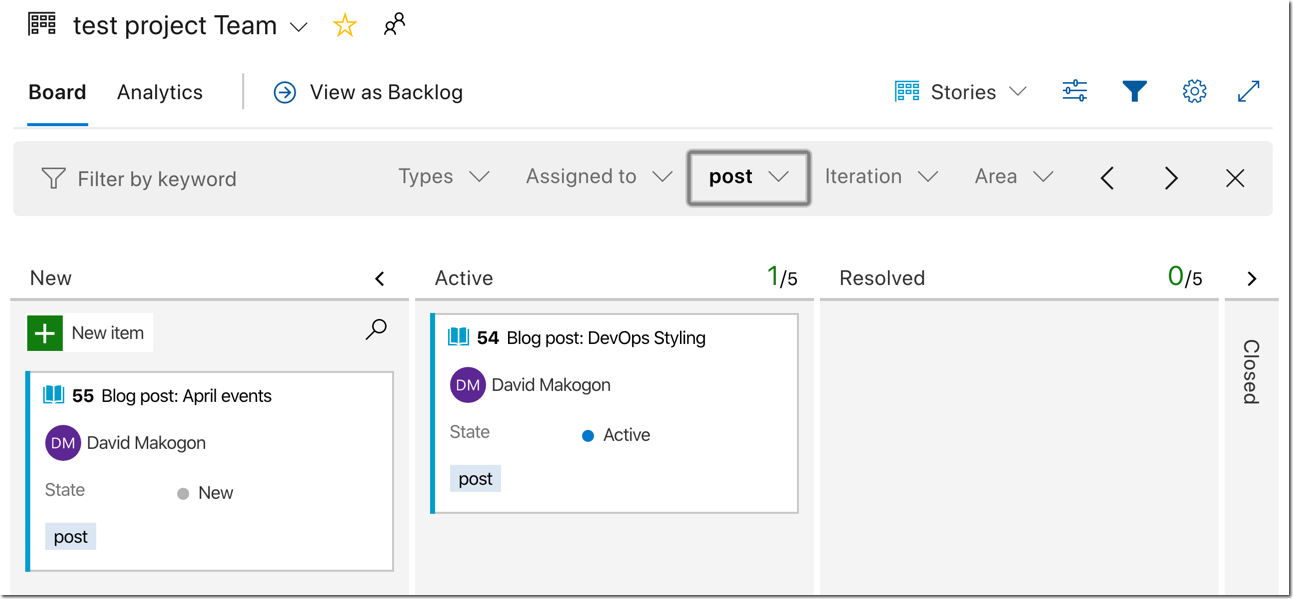

Based on that hypothesis, the following algorithm can help. In the happy day scenario we can assume that a settled team “burns” the time that they have spent spent on a task. Typically the result is that completed work remains on the original value, which usually is empty or zero. This is an out-of-the-box field of the following Process Templates: On the downside, another important field is ignored in that case: Completed work. Since the Remaining Work field is visible in the task board as shown in the following screenshot, its value can be updated on the task board directly. in daily meetings to show what they have achieved and what to do next.

Azure devops taskboard update#
In that case, it can now ask a user to test the product and provide feedback using the team’s integration.The TFS Task Board that is accessible by Web Access is a common and comfortable tool to update task status. Suppose a project uses Azure DevOps and development and project management tool.

The elements provided inside Teams extend the reach and possibilities of Azure DevOps inside organizations. I like this integration since many users, internally and with customers, use teams daily but might not use Azure DevOps daily. In this article, I went through integrating dashboards and kanban boards into Microsoft Teams. When I have added a kanban board, it looks like the image below. I can add a Kanban board the same way I do the dashboards. I use this dashboard to create new tasks in my Azure DevOps project and have an overview of the assignments I have. I can add my second dashboard the same way. Now, I have my dashboard added to Microsoft Teams, and I can interact with the items as if I was in Azure DevOps. I will select “Add a Dashboard” and select the properties in the dropdown boxes. I now choose between adding a dashboard or a kanban board. On this user, I only have access to one organization. I select the correct DevOps organization. The guide then asks for an Azure DevOps organization, so I click on “Select organization.” I start typing the name of my channel and select the new channel I created previously. Next, I click on the small down arrow next to the “Open” button and select “Add to team.” I will search for “Azure DevOps” and click on the Azure DevOps tile in the results pane. Now, I have the team created, and I can click on “Apps.” I provide a name for my channel, in this case, “DevOps - Dashboards and kanban,” and click on “Add.” I create one by clicking on the “…” next to the team name and then “Add channel.” Create Microsoft Teams channelįirst, I want to create a new channel for my dashboards. I will show both dashboards later in this article. I have added a picture below to illustrate. I can find the dashboards under “Overview” and “Dashboards.” My first dashboard is a team dashboard with an overview of most of my projects. In my Azure DevOps, I have two dashboards and a kanban board. This article will add two dashboards and one kanban board into a Microsoft Teams channel. Some of the integration can also provide co-workers/users the ability to create bug reports without having them inside your Azure DevOps environment. The integrations can be helpful when co-workers might not be inside Azure DevOps every day but are using Teams.

Azure devops taskboard how to#
Building on my last article on integrating Azure DevOps into Microsoft Teams, I want to show you how to incorporate dashboards and kanban boards.


 0 kommentar(er)
0 kommentar(er)
